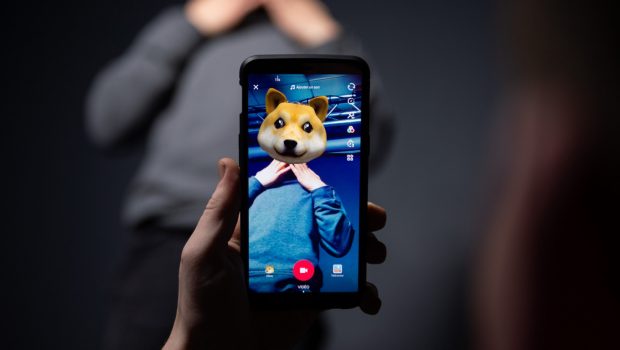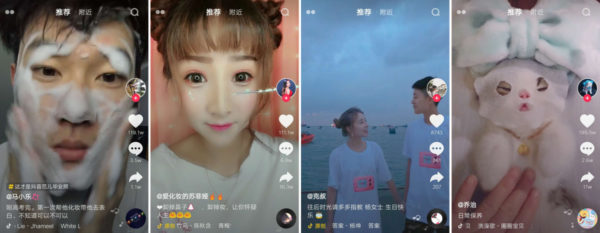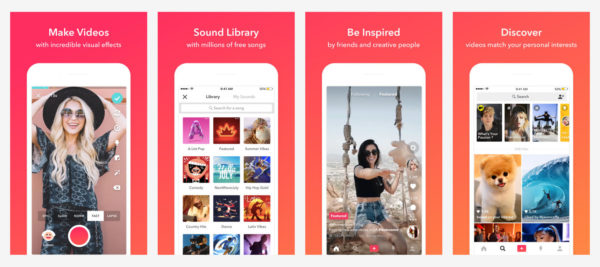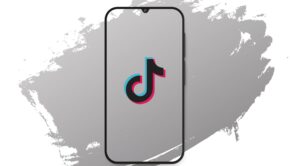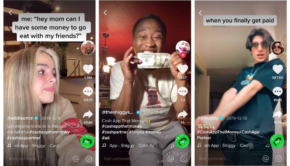TikTok: what is this app and why does it piss everyone off?
Someone enrages TikTok, but someone likes it. One way or another, now this is the new Vine and Instagram in one – there is no getting away from this Chinese-made machine. We will tell you what kind of social network it is and where it came from.
Where did TikTok come from?
ByteDance was founded in 2012 in China and is still developing mobile applications. Its main product is Toutiao, a news feed aggregator with an audience of 120 million daily. In October, ByteDance was named the most expensive startup.
This is a rather rebellious company. Most startups tend to go under the wing of large Chinese holdings like Tencent, Baidu and Alibaba almost immediately. But ByteDance decided to go against the tide and even take over developers from large technology companies, offering them salaries one and a half times higher than market ones.
The TikTok app itself appeared in 2016 and was called Douyin in China. In 500 days, it overcame major competitors within the country. By the beginning of 2018, the audience of the service was 300 million people. Thanks to this, Douyin got its own local memes like Karma’s a bitch. But on the Chinese social network, you cannot post a video where Peppa’s pig is mentioned – this character is recognized as a symbol of gangsters!
Large advertisers came to TikTok, buy tiktok followers and the service gained money on the global market.
Musical.ly – competitor and friend
In the meantime, musical.ly was launched in 2014. Initially, it was supposed to be called Cicada and was dedicated to education: experts explain complex things in simple language in the format of a five-minute video. As you already understood, this idea was abandoned. The reason: no experts were found, videos are too difficult to make, not all topics can be explained in five minutes, and the founder of the startup Alex Zhu realized that such a thing would not work.
Later, Zhu saw on the street how teenagers grimace to the music, take selfies, and post them on social media. This is how the musical.ly karaoke application appeared, where the user can record a 15-second video with a soundtrack and upload it to a separate social network. On the day the application was launched, it was already used by 500 people.
Over the next ten months, the app continued to grow its audience, but after the $ 250K flop with Cicada, it was too slow. The solution turned out to be very simple: insert a logo with the site address and the name of the application into each video. In just one month, in the US alone, the audience has grown 10 times.
Thanks to user activity tracking in musical.ly, the app has new features: duets, answers to questions, and more. Later, the service even had its own stars: twins from Germany Lisa and Lena and Baby Ariel. In addition, the traditional music industry has entered musical.ly with pop singers Selena Gomez, Megan Trainor, Jason Derulo, Lukas Graham and many others. The service has helped artists promote their music albums.
Today the application is already intended not only for recording clips for soundtracks. It’s about a social network. People want to stay with musical.ly because it already has a large audience.
Alex Zhu
In 2014, musical.ly partnered with Apple Music, licensing most of its popular songs. The essence of the partnership was that under each video there was a link in Apple Music to the song from the video. Alex Hofmann, president of musical.ly North America, decided it was a very good move as users started spending 35 minutes a day in the app.
And one more interesting fact. Remember the Vine social network? In 2016, she could not stand the competition with Instagram and died out. Against the background of the fall of Vine, Musical.ly was able to make good money, taking his place.
According to SurveyMonkey Intelligence, in 2016, musical.ly became even larger than Periscope after the introduction of broadcasts. Analysts wrote that in the US, among iOS users, 4.6 million “sat” in musical.ly, and in Periscope – 4.3 million. However, the CEO of Twitter called this data false.
ByteDance arrived
The success of musical.ly on the international market could never pass by ByteDance. In November 2017, the company made tons of money from TikTok ads and bought musical.ly for $ 1 billion. ByteDance originally intended to keep musical.ly independent, but on August 2, TikTok took over all of the app’s users and features.
Ultimately, both musical.ly and TikTok benefited from the deal. Both apps have large audiences in the US, Europe and China. Both have large advertisers. Their audience is constantly growing. Of course, some had concerns about the rebranding, since musical.ly and TikTok still have slightly different priorities, but nevertheless, the app is being downloaded very actively both in the App Store and in Google Play. According to SensorTower, in the third quarter of 2018, TikTok was in fourth place in terms of the number of downloads excluding the Chinese market. Users are so inquisitive to get more TikTok views and maintain strong presence on TikTok.
And Hootsuite analysts found that TikTok now has 500 million users. This is more than Twitter, Reddit, Pinterest and Telegram.
To Russia through annoying ads and memes
Chances are, while we were talking about musical.ly, you had some Vietnamese flashbacks about YouTube ads for the service. About the following videos you might have come across while watching a video on the Wylsacom channel.
This bullshit so infuriated everyone that many memes appeared about musical.ly.
When musical.ly officially became part of TikTok, the ads started to get even stronger.
And this, by the way, gave its results. If you download the TikTok app, you will see a bunch of Russian vines. And at the time of publication of the article, TikTok ranks 16th among the most popular applications on the Russian Google Play, and in the App Store – the third in the photo and video category.
Rustem Bogdanov told TJ that his advertising agency on TikTok is actively working with various Russian stars. For example, they are promoting Little Big and filming a music video for rapper ST.
The main audience of TikTok in Russia is teenagers from 14 to 21 years old. But LidMashina noticed that there were also older channel authors. One of the couples grimaced to the Enjoykin song about macaroshki and mashed potatoes.
It is widely believed in Russia that the main genre of TikTok is lip-sync, when people move their lips and dance to the music. This is not entirely true. TikTok has inherited a lot from Instagram, but with one important difference: Stories on TikTok do not disappear and continue to give views.
But yes, there are not enough such videos on TikTok now – everything repeats the antics from advertising. But we have new memes. We love memes, right?
TikTok for user
If you are an avid Instagram user, then you will not see any obvious differences between the applications. On the home screen, the videos play one after the other – a little inconvenient if you just want to go and flip through the feed somewhere in the queue.
In the search, you will be shown selections by popular hashtags:
The video editor has funny stickers and face effects. However, apart from these dancing people, there is nothing interesting there.
As in other social networks, on TikTok you can subscribe to someone and follow their antics. Why it became popular, you can understand: nothing like this has ever happened. For young people this is something new, and for adults it is a way to have fun on the weekend.
Nevertheless, TikTok has enough haters, especially in Russia. Basically, hatred is manifested in misunderstanding: many simply do not fit into their heads how anyone can like it at all, the content is for “degenerates”. However, at one time, selfies were looked at like a heap of dung, and thanks to haters, this genre of photography became popular.
Source: https://www.tiktokrush.com/

